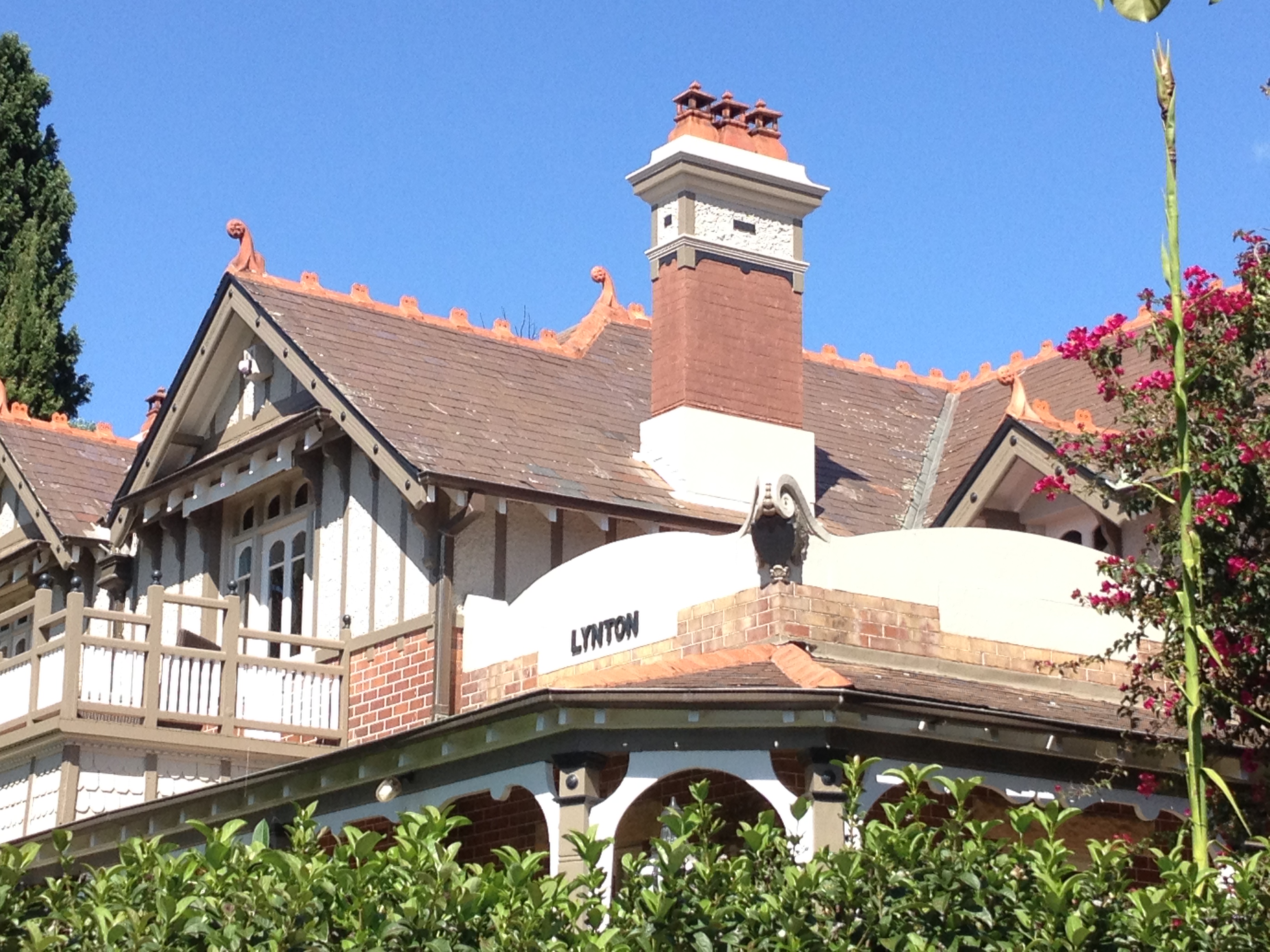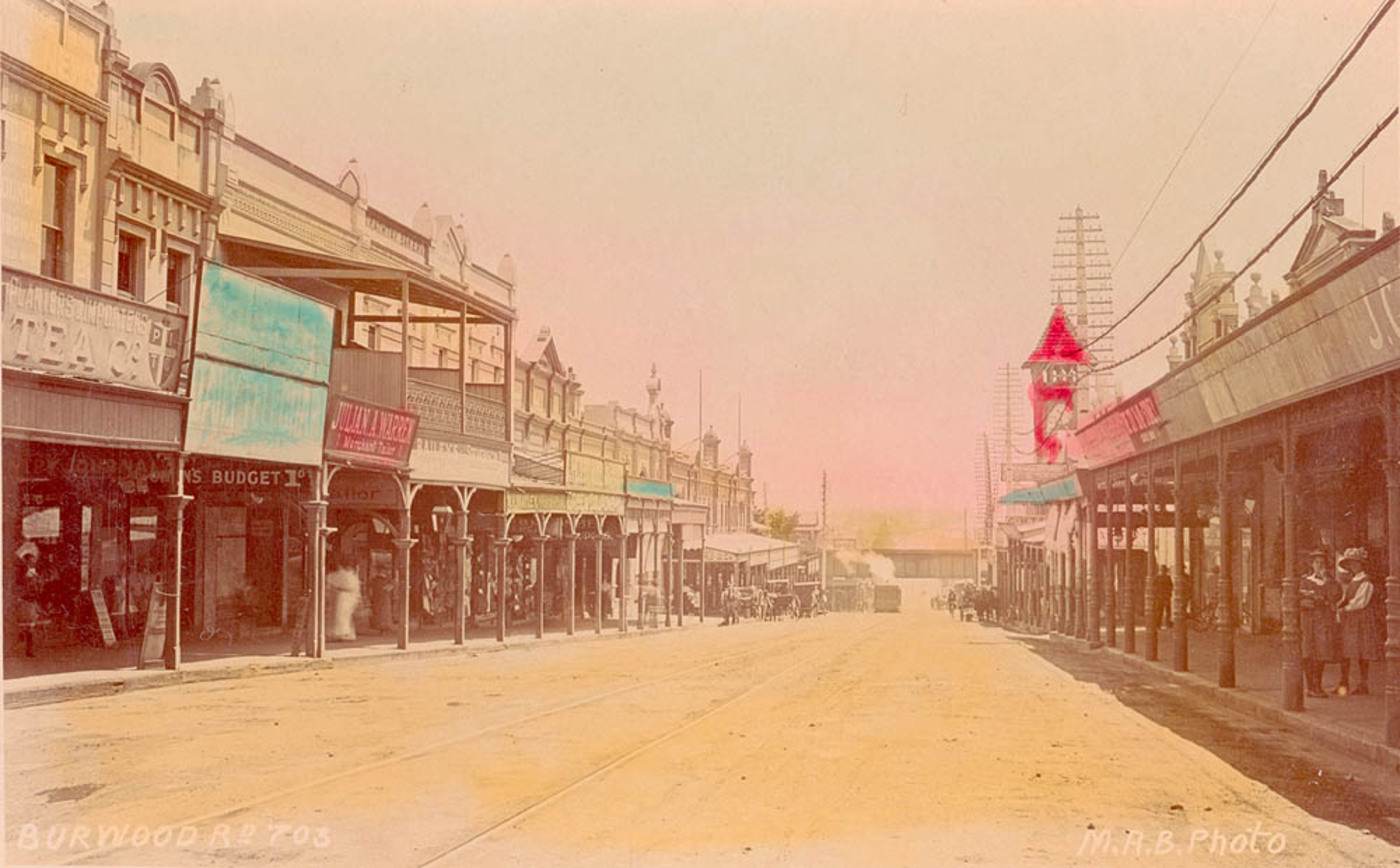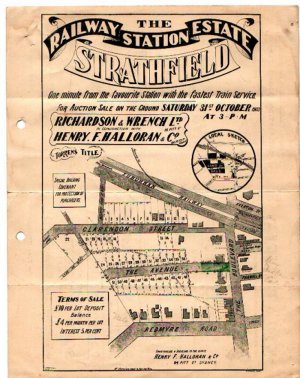|
Stanley Rickard
Stanley Noble Rickard (4 January 1883 – 21 August 1976) was a New Britain-born Australian architect active in Sydney and Los Angeles in the first half of the 20th century. His work in the Federation Bungalow style is listed on the NSW State Heritage Register. Family Rickard was the first born child of Queensland-born Emma Augusta (née Noble 1860–1943) and New South Wales-born Richard Heath Rickard (1858–1938). His parents had married in Queensland in 1882 and his father was a Wesleyan missionary serving in the Bismarck Archipelago at the time of his birth in New Britain. Rickard's younger siblings were Norman Heath (1885–1949), Eda Malila (1887–1988), Albert Sydney (1890–1965) and Hazel Alice (1894–1980). His uncle, on his father's side, waSir Arthur Rickard KBEwho was married to the daughter of the Sydney architect Thomas Rowe. His first cousin once removed was the architect Bruce Rickard. Education On the return to Australia of his family, Rickard was ... [...More Info...] [...Related Items...] OR: [Wikipedia] [Google] [Baidu] |
Bismarck Archipelago
The Bismarck Archipelago (, ) is a group of islands off the northeastern coast of New Guinea in the western Pacific Ocean and is part of the Islands Region of Papua New Guinea. Its area is about 50,000 square km. History The first inhabitants of the archipelago arrived around 30–40,000 years ago. They may have traveled from New Guinea, by boat across the Bismarck Sea or via a temporary land bridge, created by an uplift in the Earth's Crust (geology), crust. Later arrivals included the Lapita people. The first European to visit these islands was Dutch explorer Willem Schouten in 1616. The islands remained unsettled by western Europeans until they were annexed as part of the German protectorate of German New Guinea in 1884. The area was named in honour of the Chancellor of Germany (German Reich), Chancellor Otto von Bismarck. On 1888 Ritter Island eruption and tsunami, 13 March 1888, a volcano erupted on Ritter Island causing a megatsunami. Almost the entire volcano fell into t ... [...More Info...] [...Related Items...] OR: [Wikipedia] [Google] [Baidu] |
Newcastle, New South Wales
Newcastle ( ; Awabakal: ) is a metropolitan area and the second most populated city in the state of New South Wales, Australia. It includes the Newcastle and Lake Macquarie local government areas, and is the hub of the Greater Newcastle area, which includes most parts of the local government areas of City of Newcastle, City of Lake Macquarie, City of Cessnock, City of Maitland and Port Stephens Council. Located at the mouth of the Hunter River, it is the predominant city within the Hunter Region. Famous for its coal, Newcastle is the largest coal exporting harbour in the world, exporting 159.9 million tonnes of coal in 2017. Beyond the city, the Hunter Region possesses large coal deposits. Geologically, the area is located in the central-eastern part of the Sydney Basin. History Aboriginal history Newcastle and the lower Hunter Region were traditionally occupied by the Awabakal and Worimi Aboriginal people, who called the area Malubimba. Based on Aboriginal language refere ... [...More Info...] [...Related Items...] OR: [Wikipedia] [Google] [Baidu] |
New South Wales State Heritage Register
The New South Wales State Heritage Register, also known as NSW State Heritage Register, is a heritage list of places in the state of New South Wales, Australia, that are protected by New South Wales legislation, generally covered by the Heritage Act 1977 and its 2010 amendments. The register is administered by the Heritage Council of NSW via Heritage NSW, a division of the Government of New South Wales Department of Planning and Environment. The register was created in 1999 and includes items protected by heritage schedules that relate to the State, and to regional and to local environmental plans. As a result, the register contains over 20,000 statutory-listed items in either public or private ownership of historical, cultural, and architectural value. Of those items listed, approximately 1,785 items are listed as significant items for the whole of New South Wales; with the remaining items of local or regional heritage value. The items include buildings, objects, monuments, A ... [...More Info...] [...Related Items...] OR: [Wikipedia] [Google] [Baidu] |
Burwood, New South Wales
Burwood is a suburb in the Inner West of Sydney, in the state of New South Wales, Australia. It is west of the Sydney central business district and is the administrative centre for the Local government in Australia, local government area of Municipality of Burwood. People from Burwood are colloquially known as Burwoodiens or Burwooders. Burwood Heights, New South Wales, Burwood Heights is a separate suburb to the south. The Appian Way, Burwood, Appian Way is a street in Burwood, known for its architecturally designed Federation architecture, Federation-style homes. History Archaeological evidence indicates people were living in the Sydney area for at least 11,000 years. This long association had led to a harmonious relationship between the Indigenous peoples, indigenous inhabitants and their environment, which was interrupted by the arrival of the British in 1788. The European desire to cultivate the land aided and abetted by a smallpox epidemic that forced the local people, t ... [...More Info...] [...Related Items...] OR: [Wikipedia] [Google] [Baidu] |
Lynton, Burwood
''Lynton'' is a heritage-listed residence located at 4 Clarence Street in the Sydney suburb of Burwood in the Municipality of Burwood local government area of New South Wales, Australia. It was designed by Stanley Rickard and built from 1906. It was added to the New South Wales State Heritage Register on 2 April 1999. History Burwood Parramatta Road was first created in 1791, a vital land (cf water) artery between Sydney Cove and Rose Hill's settlement and crops. Liverpool Road opened in 1814 as Governor Macquarie's Great South Road. Its winding route reflects pre-existing land grant boundaries. To Burwood's north over Parramatta Road was Longbottom Government Farm, staffed by convicts. This grew to over on heavily timbered flat, sloping to swamps on Hen & Chicken Bay. Commissioner Bigge recorded how valuable timber (ironbark) was cut and sawn on the spot, conveyed to Sydney in boats by the river. "Charcoal for the forges and foundries is likewise prepared here" he n ... [...More Info...] [...Related Items...] OR: [Wikipedia] [Google] [Baidu] |
Ashfield, New South Wales
Ashfield is a suburb in the Inner West of Sydney, in the state of New South Wales, Australia. Ashfield is about 8 kilometres west of the Sydney central business district. Ashfield's population is highly multicultural. Its urban density is relatively high for Australia, with the majority of the area's dwellings being a mixture of mainly post-war low-rise flats (apartment blocks) and Federation-era detached houses. Amongst these are a number of grand Victorian buildings that offer a hint of Ashfield's rich cultural heritage. History Aboriginal people Prior to the arrival of the British, the area now known as Ashfield was inhabited by the Wangal people. Wangal country was believed to be centered on modern-day Concord and stretched east to the swampland of Long Cove Creek (now known as Hawthorne Canal). The land was heavily wooded at the time with tall eucalypts covering the higher ground and a variety of swampy trees along Iron Cove Creek. The people hunted by killing nativ ... [...More Info...] [...Related Items...] OR: [Wikipedia] [Google] [Baidu] |
Bondi, New South Wales
Bondi () is a suburb of eastern Sydney, in the state of New South Wales, Australia, seven kilometres east of the Sydney central business district, in the local government area of Waverley Council. It is often colloquially referred to as "Bondy". Geography Bondi is a mostly medium and high-density residential area centred on Bondi Road, where the shopping area is situated. Bondi Beach is a neighbouring suburb and beach on the east side of Bondi. Bondi Junction is a neighbouring suburb and commercial centre to the west of Bondi. Tamarama, Bronte and Waverley are situated on the south side of Bondi. History Bondi is said to be a corruption of an Aboriginal word ''boondi'' meaning ''water breaking over rocks''. It has been spelt a number of different ways over time, e.g. Boondi, Bundi, Bundye. The current spelling was accepted in 1827. The whole Bondi area was part of an 1809 land grant of to road-builder William Roberts. In 1851, Edward Smith Hall, editor of the ''Sydney Moni ... [...More Info...] [...Related Items...] OR: [Wikipedia] [Google] [Baidu] |
Strathfield, New South Wales
Strathfield is a suburb in the Inner West of Sydney, in the state of New South Wales, Australia. It is located 12 kilometres west of the Sydney central business district and is the administrative centre of the Municipality of Strathfield. A small section of the suburb north of the railway line lies within the City of Canada Bay, while the area east of The Boulevard lies within the Municipality of Burwood. North Strathfield and Strathfield South are separate suburbs to the north and south, respectively. History The Strathfield district lies between the Concord Plains to the north and the Cooks River to the south, and was originally occupied by the Wangal clan. European colonisation in present-day Strathfield commenced in 1793 with the issue of land grants in the area of "Liberty Plains", an area including present-day Strathfield as well as surrounding areas, where the first free settlers received land grants. In 1808, a grant was made to James Wilshire, which forms the largest p ... [...More Info...] [...Related Items...] OR: [Wikipedia] [Google] [Baidu] |
Royal Institute Of British Architects
The Royal Institute of British Architects (RIBA) is a professional body for architects primarily in the United Kingdom, but also internationally, founded for the advancement of architecture under its royal charter granted in 1837, three supplemental charters and a new charter granted in 1971. Founded as the Institute of British Architects in London in 1834, the RIBA retains a central London headquarters at 66 Portland Place as well as a network of regional offices. Its members played a leading part in promotion of architectural education in the United Kingdom; the RIBA Library, also established in 1834, is one of the three largest architectural libraries in the world and the largest in Europe. The RIBA also played a prominent role in the development of UK architects' registration bodies. The institute administers some of the oldest architectural awards in the world, including RIBA President's Medals Students Award, the Royal Gold Medal, and the Stirling Prize. It also manages ... [...More Info...] [...Related Items...] OR: [Wikipedia] [Google] [Baidu] |
Articled Clerk
Articled clerk is a title used in Commonwealth countries for one who is studying to be an accountant or a lawyer. In doing so, they are put under the supervision of someone already in the profession, now usually for two years, but previously three to five years was common. This can be compared as being an intern for a company. Trainees are obligated to sign a contract agreeing to the terms of being an articled clerk. The articled clerk signs a contract, known as "articles of clerkship", committing to a fixed period of employment. ''Wharton's Law Lexicon'' defines an articled clerk as "a pupil of a solicitor, who undertakes, by articles of clerkship, continuing covenants, mutually binding, to instruct him in the principles and practice of the profession". The contract is with a specific partner in the firm and not with the firm as a whole. Now, some professions in some countries prefer to use the term "students" or "trainees" (e.g. a trainee solicitor) and the articles of clerkship ... [...More Info...] [...Related Items...] OR: [Wikipedia] [Google] [Baidu] |
Architecture
Architecture is the art and technique of designing and building, as distinguished from the skills associated with construction. It is both the process and the product of sketching, conceiving, planning, designing, and constructing buildings or other structures. The term comes ; ; . Architectural works, in the material form of buildings, are often perceived as cultural symbols and as works of art. Historical civilizations are often identified with their surviving architectural achievements. The practice, which began in the prehistoric era, has been used as a way of expressing culture for civilizations on all seven continents. For this reason, architecture is considered to be a form of art. Texts on architecture have been written since ancient times. The earliest surviving text on architectural theories is the 1st century AD treatise '' De architectura'' by the Roman architect Vitruvius, according to whom a good building embodies , and (durability, utility, and beauty). ... [...More Info...] [...Related Items...] OR: [Wikipedia] [Google] [Baidu] |









